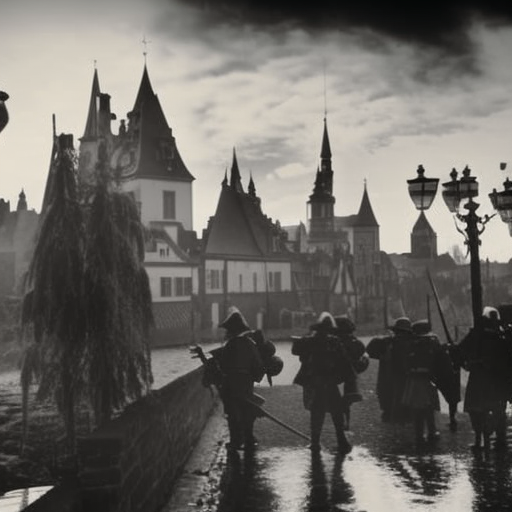The Thirty Years’ War (1618-1648)
The Thirty Years’ War was a devastating conflict that took place in Europe from 1618 to 1648. It was primarily fought in the territories of the Holy Roman Empire, encompassing present-day Germany, Austria, and parts of France, Denmark, Sweden, and the Netherlands. The war was a complex mix of religious, political, and territorial disputes, and it had a profound impact on the balance of power in Europe.
Causes of the War
The war was triggered by religious tensions between Catholics and Protestants in the Holy Roman Empire. The Peace of Augsburg in 1555 had granted limited religious freedom to Lutherans, but excluded other Protestant denominations. This led to growing discontent among Calvinists and other Protestant groups, who demanded equal rights. The conflict escalated when the Catholic Habsburg Emperor Ferdinand II sought to impose Catholicism on his Protestant subjects.
Phases of the War
The war can be divided into four main phases: the Bohemian phase (1618-1625), the Danish phase (1625-1629), the Swedish phase (1630-1635), and the French phase (1635-1648). Each phase saw different alliances and shifting power dynamics.
In the Bohemian phase, the Protestant nobles of Bohemia rebelled against Ferdinand II, electing Frederick V of the Palatinate as their king. However, Ferdinand’s forces quickly crushed the rebellion, leading to a Catholic victory.
In the Danish phase, King Christian IV of Denmark intervened on behalf of the Protestant cause. However, he was defeated by the Catholic forces led by the Imperial general Albrecht von Wallenstein. The Peace of Lübeck in 1629 marked a turning point, as it allowed Ferdinand II to reimpose Catholicism in the territories he had conquered.
The Swedish phase saw the entry of Sweden into the war under the leadership of King Gustavus Adolphus. The Swedish forces achieved several victories and gained control over large parts of northern Germany. However, Gustavus Adolphus was killed in the Battle of Lützen in 1632, and his death weakened the Protestant cause.
In the French phase, Cardinal Richelieu of France intervened on the side of the Protestants, primarily to counter the Habsburgs’ growing power. The war became increasingly focused on the struggle between France and the Habsburgs, with other European powers joining the conflict. The Peace of Westphalia in 1648 finally ended the war, recognizing the independence of the Dutch Republic and Switzerland and granting religious freedom to Protestants.
Impact of the War
The Thirty Years’ War had a devastating impact on the population and economy of Europe. It is estimated that millions of people died as a result of the war, both from direct combat and from famine and disease. Entire regions were devastated, and the war left a legacy of bitterness and resentment.
The war also had significant political consequences. The Peace of Westphalia marked a shift from religious to territorial sovereignty, as states gained the right to determine their own religion. The power of the Holy Roman Empire was greatly weakened, and France emerged as the dominant European power.
The war also had a profound impact on the development of international law. The Peace of Westphalia established the principle of non-interference in the internal affairs of sovereign states, and it laid the foundation for the modern system of nation-states.
In conclusion, the Thirty Years’ War was a complex and devastating conflict that had far-reaching consequences for Europe. It was driven by religious tensions, but it also involved political and territorial disputes. The war can be divided into four main phases, each marked by shifting alliances and power dynamics. The Peace of Westphalia finally ended the war and had a lasting impact on the balance of power in Europe.












